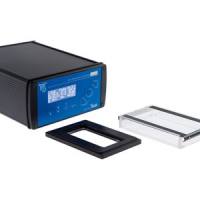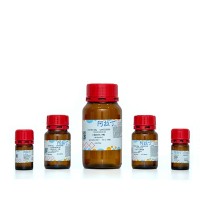Exposing gels and plates containing radioactive samples to X-ray film
互联网
Exposing gels and plates containing radioactive samples to X-ray film
Although most people use the PhosphorImager for western blots, kinase assays and methionine-labeled samples, X-ray film remains the best way to expose peptide maps and prep gels.
Terminology
Autoradiography is the direct exposure of film by beta particles or gamma rays.
Fluorography is the exposure of film by secondary light that was generated by the excitation of a fluor or a screen by a beta particle or a gamma ray.
Fluorography works best with flashed film and exposure of the film at - 70°C. The flashing particularly helps the detection of weak bands or spots. In some circumstances there is a threshold below which nothing can be detected. Flashing reduces this threshold.
Detection of 3H.
3H cannot be detected by autoradiography unless you have 1 mCi of it in your band. Because this is almost unheard of, it is essential to impregnate a gel containing 3H with PPO or Enlightening or to spray a 3H-containing TLC plate with spray Enhance or some such product in order to detect tritium.
In both cases exposure should be with flashed film at - 70°C.
Detection of 35S and 14C.
35S and 14C can be detected by autoradiography. Simply expose your sample with unflashed film at room temperature or use the PhosphorImager.
Detection of 32P and 125I.
32P and 125I can also be detected by autoradiography. Just expose your sample with unflashed film at room temperature.
Note that the image provided by direct autoradiography is always sharper than is the image resulting from fluorography.
Exposure with both isotopes can be accelerated greatly through the use of a screen.
When using a screen put flashed film between the screen and the gel or TLC plate and expose at -70°C.
Note that the film is exposed in two ways this way: directly by beta particles from the gel and secondarily by light from the screen. The majority of the exposure is from the screen. It is this side of the film that should be the so-called flashed side-- see below .
Alternatively, use the PhosphorImager.
Screens do not enhance 3H, 14C or 35S.
PPO and Spray enhance do not enhance the detection of 32P or 125I.
Exposure at -70°C does not enhance autoradiography. It does not hurt it however
It seems likely in addition that flashing fogs the top emulsion more than the bottom emulsion. It is this side of the film that is referred to colloquially as the flashed side of the film. Therefore, to get the most out of flashing, the flashed side of the film should be put facing the PPO'ed gel or facing the screen, depending on which isotope is being detected.










